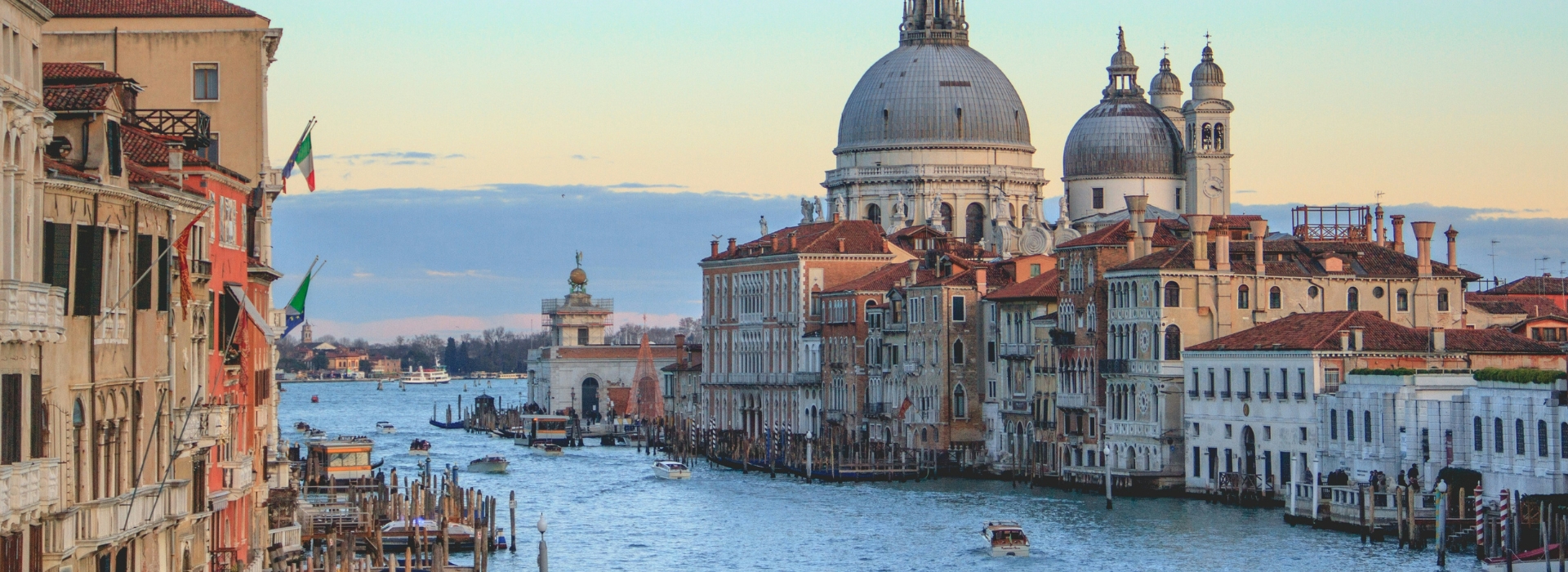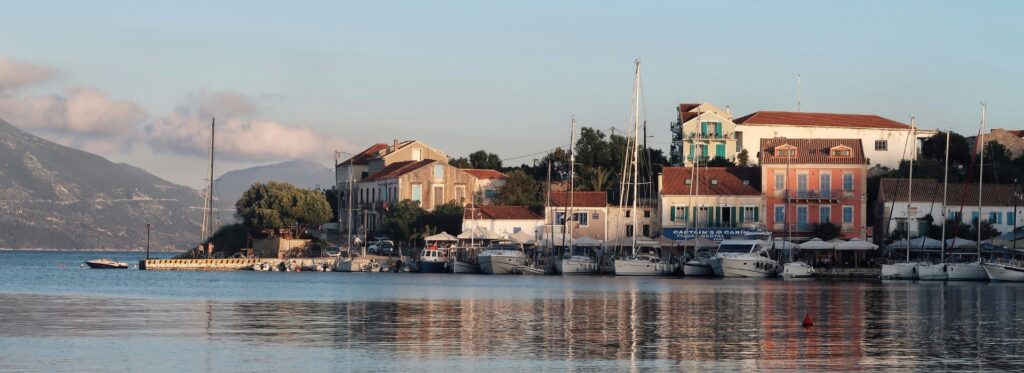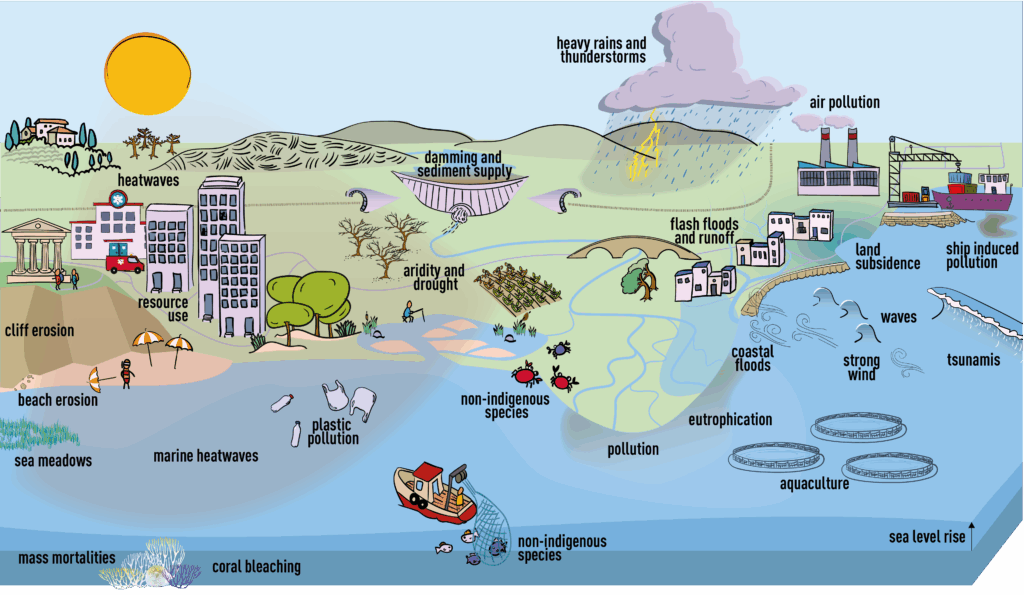The Mediterranean is a hotspot of biodiversity, human activity, and cultural heritage, yet is highly vulnerable to climate change and environmental pressures, especially along its coastlines, where one third of its population lives.
Written by 55 experts from 17 countries, our special report on coastal risks in the Mediterranean examines the growing threats to the region’s coastlines and provides a detailed assessment along with concrete pathways for action.
It relies on more than 1000 scientific publications and builds upon the MedECC MAR1 Assessment Report, previous reports by the Intergovernmental Panel on Climate Change (IPCC), and other relevant regional, national, and local assessments.

In the report:
Chapter 1 – Context and framing
Outlining the policy, environmental and societal background and establishing a common assessment framework.
Chapter 2 – Drivers and their interactions
Offering an overview of the main natural and socio-economic drivers influencing the Mediterranean coasts.
Chapter 3 – Impacts and risks
Analysing the main coastal impacts and risks affecting Mediterranean coasts, at different time scales and with drivers of different origin.
Chapter 4 – Managing climatic and environmental risks
Assessing the potential and prospective responses to climate change and environmental risks and presenting best practices across the region.
Chapter 5 – Sustainable development pathways
Focused on Mediterranean coastal areas and communities, and identifying sustainable pathways and the barriers to their implementation.

Key takeways:
Climate and environmental change is affecting both the terrestrial and marine parts of the Mediterranean coastline and is expected to pose serious risks for ecosystems and key economic sectors, particularly through coastaline erosion, sea level rise, biodiversity loss, water scarcity, and accumulated pollution.

By 2050, the mean shoreline is projected to retreat up to 23 m.
Areas near river mouths, ports, and infrastructure are particularly affected and the erosion increases the risk of storm damage and the loss of habitats and ecosystem services.
The sea level is rising by 3 mm per year: twice as fast as in the last century.
Low-lying areas face increased flooding, and key infrastructure is under threat.
Freshwater resources are also stressed by reduced rainfall, seawater intrusion into aquifers, and higher demand from tourism and agriculture, especially during summer.
Wetlands have already lost half of their surface since 1900.
Marine species are increasingly stressed by heatwaves, pathogens, and over 1000 invasive species, and jellyfish blooms are becoming more frequent.
Pollution from nutrients, metals, plastics, and pharmaceuticals is amplifying threats to ecosystems, fisheries, and human health.
Together, these interconnected risks underscore the urgent need for coordinated adaptation and mitigation measures in the region.
Current efforts largely focus on protecting coasts, limiting erosion, and conserving ecosystems. Yet, many of these measures remain short-term insufficient to address long-term climate impacts, such as future sea-level rise. Relocation and nature-based solutions are still rarely applied.
Sustainable development in the Mediterranean coastal zone requires a transformative approach that addresses environmental challenges while promoting social equity and economic stability.
By adopting circular economy models, investing in renewable energy, cutting pollution at its source, protecting blue carbon ecosystems, and involving all stakeholders in decision-making, the region can build a more resilient and sustainable future.
Available:
Full Report – English
Summary for Policymakers – English, French (soon), Arabic (soon), Spanish (soon), Catalan (soon)
Illustrated 4-page Summary – English
